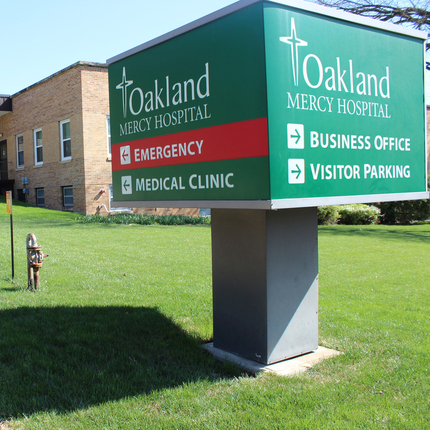By Nathan Beacom, former staff member. Published in the Omaha World-Herald on Aug. 28, 2021
On July 1, Burt County lost its only hospital. Most recently operated by MercyOne, it served the county and surrounding towns for more than 70 years. Now, residents will have to drive to a neighboring county for emergency and other essential services.
Emergency services, in particular, have a special significance in rural areas, which have higher incidence of the five leading causes of death — heart disease, injury, diabetes, cancer, chronic lower respiratory disease, and stroke — than urban areas. This means rural residents are more likely to find themselves in crisis medical situations and less likely to receive adequate, timely care.
In medical emergencies associated with chronic illnesses or with traumatic farm injuries, every minute counts. In cases of stroke, each passing minute can mean the death of more cells in the brain. The longer a patient goes without treatment, the more likely it is the damage could become permanent or lead to death. In heart attacks, passing minutes mean more dead heart tissue. In traumatic injuries, lost time may mean loss of blood.
This matters especially because rural residents also live farther from lifesaving care. A person who lives in the Oakland area, prior to the hospital closure, would have had to drive a few minutes to get to an emergency department. Now it might take 25 minutes or more to get to Pender or West Point, driven by an EMS volunteer who might now miss a whole afternoon of work.
What has happened in Burt County is representative of challenges across rural parts of the state, where there are large shortages of nurses, doctors, and techs, and where many critical medical treatments are becoming harder to access. Every single county in the state, except for Douglas and Lancaster, is designated as a shortage area for at least one type of primary care provider.
Western, northeastern, and parts of south-central Nebraska are most adversely affected, as only 39 counties of the state’s 93 have an OB-GYN, a huge drop from 49 just two years previous. A pregnant woman in a place such as Arthur will have to take a four-hour round trip to North Platte to see the nearest obstetrician.
In the absence of a critical hospital, Burt County is trying to pick up the pieces. Emergency Manager Andrew Donawa has proposed a community paramedic program that would place four trained paramedics in the county. These professionals would work in tandem with volunteer services to ensure patients are stabilized and moved to the nearest medical facility as safely and quickly as possible. This may be a necessary measure to fill the gap where a hospital ought to be. Even so, this solution is no replacement for hospital services, and is necessary only because those crucial services have become unavailable.
Universities, nonprofits, local governments, hospital systems and legislators need to get creative about recruiting and retaining medical workers and ensuring critical rural hospitals have a reimbursement structure that allows them to fulfill their necessary purpose for the areas they serve. We need a stronger education pipeline for rural medical professionals, graduate medical training placements in rural settings, and vigorous recruitment of rural students to medical fields.
We also need to increase incentives for medical professionals to work in rural communities, to examine licensing barriers or regulatory hurdles that could be removed, and to think of new financial models for rural hospitals. The need is urgent.
Even in non-emergency situations, residents in counties like Burt deserve a hospital where they can get essential treatment, or at least be made ready for a transfer to another hospital that can provide the care they require. The closure of Burt County’s hospital should be a cause for renewed vigor in addressing what has become a crisis in access to health care in our state’s rural counties.





